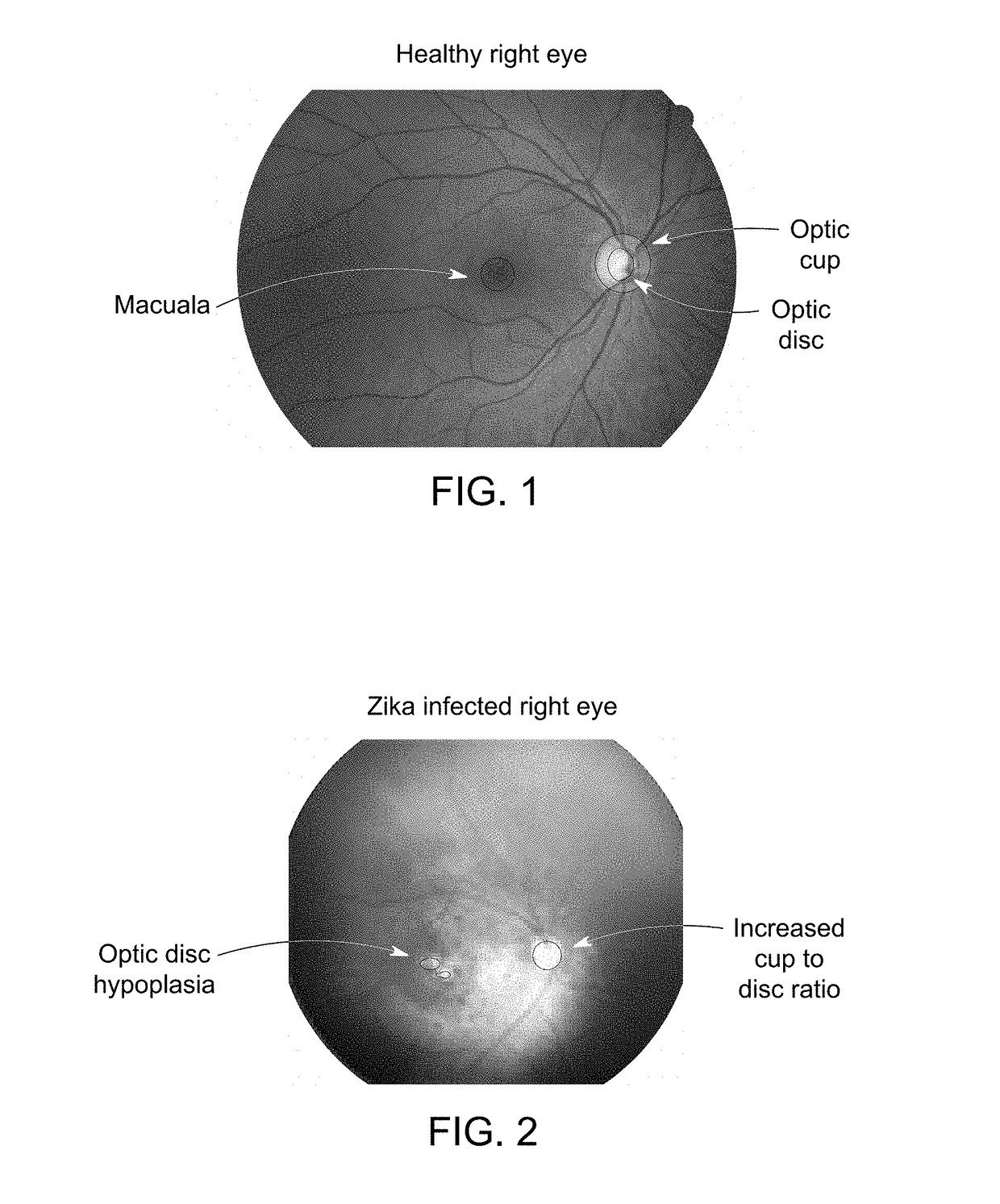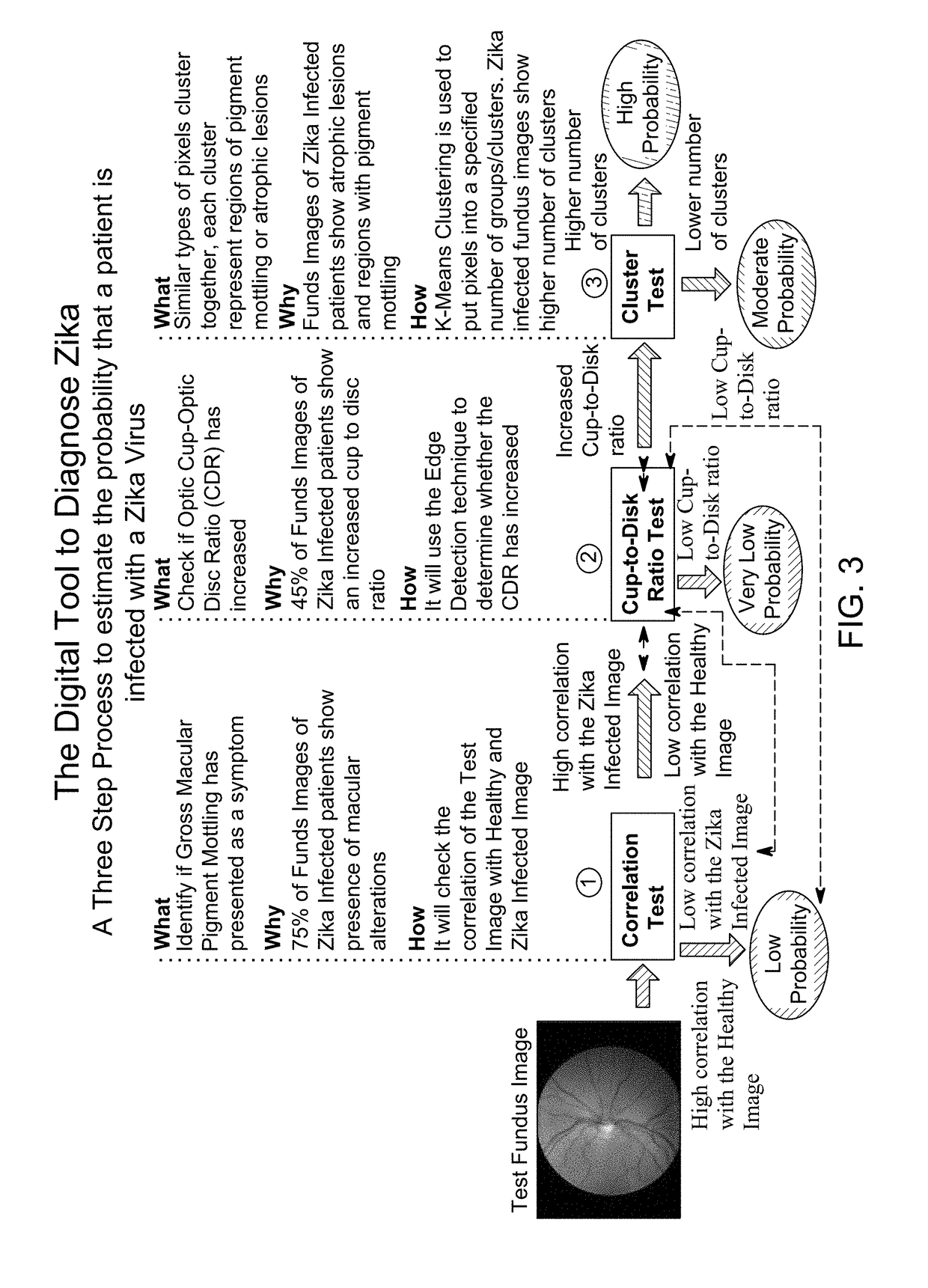Methods for diagnosing zika virus
a zika virus and method technology, applied in the field of zika virus, can solve the problems of severe brain damage and malformation, unprepared world for containment, and inability to prevent any medication or vaccine,
- Summary
- Abstract
- Description
- Claims
- Application Information
AI Technical Summary
Benefits of technology
Problems solved by technology
Method used
Image
Examples
example
[0041]A dataset of 177 fundus, images was examined: 7 images were from patients having Zika virus; 100 images were from patients without any eye diseases or disorders; 50 images were from patients having glaucoma; and 20 images were from patients having other degenerative eye diseases. After each imaged had been analyzed by the above described three step program, the program output successfully identified the 7 images from patients having Zika virus and had an overall 99.5% success rate with an average run time of 47 seconds.
[0042]The significance of this process can be found in the situation of a Zika Epidemic. Previously, tens of thousands of people sent their blood samples to the CDC or any equivalent testing lab and waited 4-14 days to determine their Zika virus status. However, now the individual or their healthcare provider can easily make the diagnosis using an app on their smart phone and within a minute of their time, can know their status. Public health officials can use t...
PUM
| Property | Measurement | Unit |
|---|---|---|
| time span | aaaaa | aaaaa |
| structures | aaaaa | aaaaa |
| density | aaaaa | aaaaa |
Abstract
Description
Claims
Application Information
 Login to View More
Login to View More - R&D
- Intellectual Property
- Life Sciences
- Materials
- Tech Scout
- Unparalleled Data Quality
- Higher Quality Content
- 60% Fewer Hallucinations
Browse by: Latest US Patents, China's latest patents, Technical Efficacy Thesaurus, Application Domain, Technology Topic, Popular Technical Reports.
© 2025 PatSnap. All rights reserved.Legal|Privacy policy|Modern Slavery Act Transparency Statement|Sitemap|About US| Contact US: help@patsnap.com


